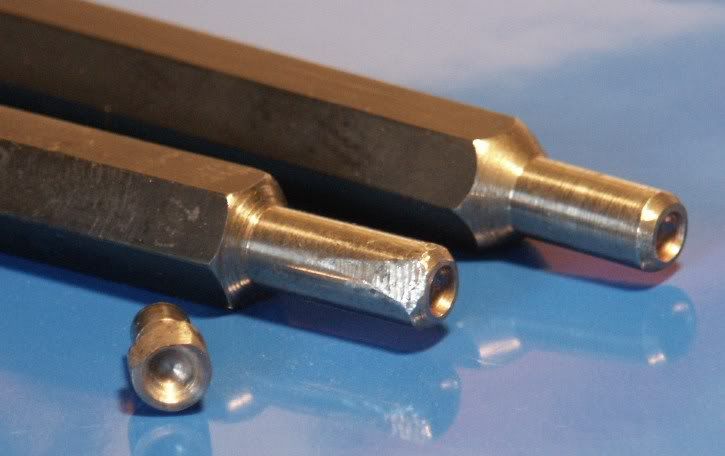Kerbtrawler – I love riveting.
I started thinking it was going to be the easiest thing.
Then I found you need 3 hands, and a spare for setting the rivet. The whole thing became an exercise in frustration. What a PITA.
Now I have a different solution. I bought an air hammer – a scaled down version of the big air hammers the pros use!!!!. (£20 from Axminster)
Them I turned the hammer tools that came with it rather like Jason did with his snaps. Extra – long ones in silver steel as well to get right into the bottom of the tender, but the easy ones to use are pretty short. The rivet head cavity is machined with a ball nosed slot drill to size.
You put the “anvil” snap in a vice – making sure its supported at the bottom. You then have two hands to insert the rivet and support the job in the “anvil”. Set the rivet with a small hammer and a bit of tube. Pick up air hammer with reduced air (40psi or so). Pull trigger.
2 seconds later you have a perfect double domed head rivet.
Absolutely perfick. Easy quick and painless
Oh and don’t oversquinge the rivet or it will spread the base material. And you’ll have irretrievably curved hornplates, and it becomes a sod to align the crank and 2nd motion shafts. So tight, but not too tight – even the dummies around the firebox.
Edited By mgj on 06/04/2010 18:09:59
Les Jones 1.



 Just easy to position rims concentrically. But yes a drawn circle on a flat board will do.
Just easy to position rims concentrically. But yes a drawn circle on a flat board will do.



